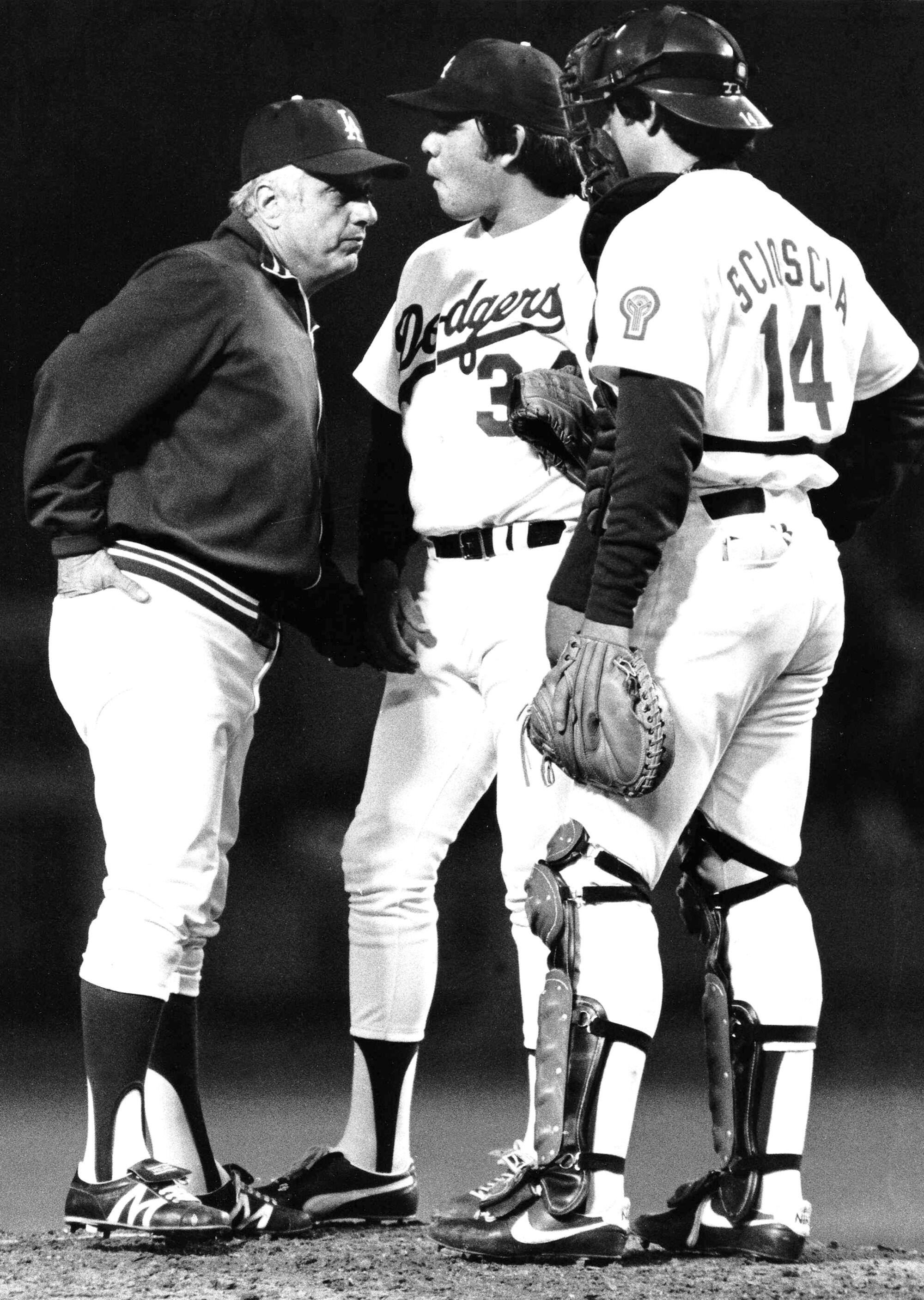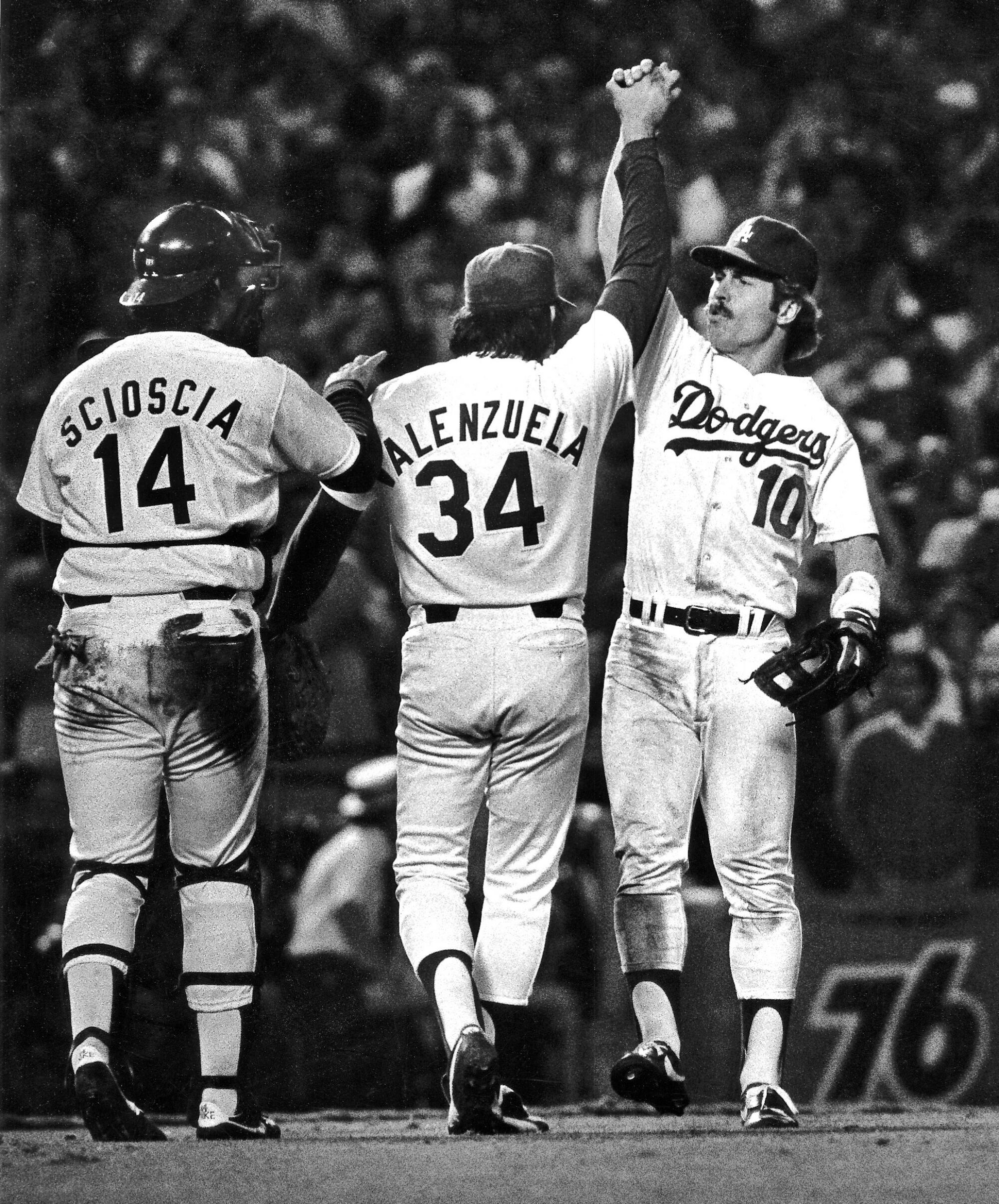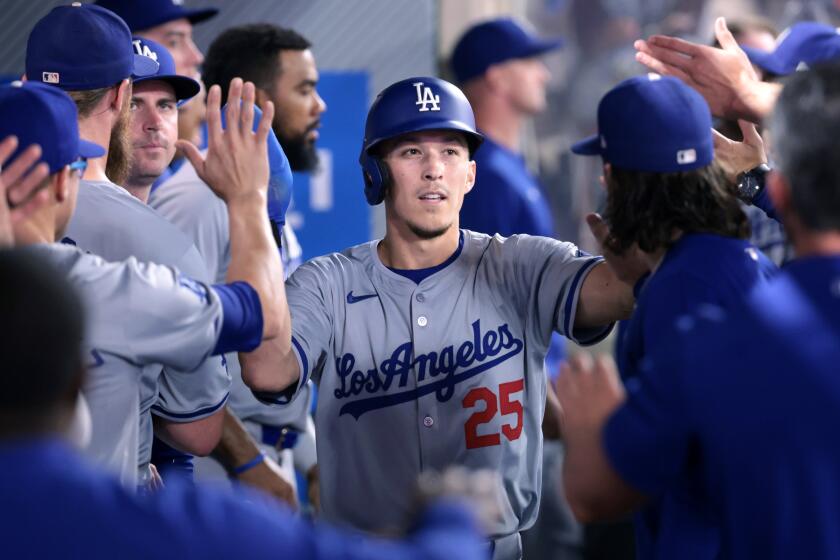
Fernando Valenzuela had a screwball, but he certainly wasnât one.
Take it from Mike Scioscia, the Dodger who caught most of his pitching starts for more than a decade, starting with the amazing run of 1981 that created a term that will live forever in the world of sports: Fernandomania.
Back then, and even now, the assumption is that any 20-year-old rookie entering the major leagues, especially one who didnât speak English, would be quiet, a bit intimidated, often a nervous wreck. Scioscia debunks all that. He says that, in most situations on the mound, Fernando knew exactly how to handle things, what to throw and how to throw it. As soon as he got to the big leagues, he was a monster, Scioscia says.
âYou could see his leadership in the clubhouse,â the veteran catcher and former Angels manager recalls. âHe seemed to keep everybody calm. He just knew he was good. He knew what he could do and he let his pitches do the talking.â

Scioscia is like so many who are still reeling from Valenzuelaâs recent death: So young at 63, so intertwined with Dodger lore, so distinct in personality. Scioscia couldnât call it a loss, because the word didnât quite cover it.
âWhen I heard he had left the broadcast booth [Sept. 24,]â Scioscia says, âI knew it was serious. I called and asked to see him, but he wasnât seeing anybody.â
Visits would have been nice, but there was little need for further legacy-building. Fernando Valenzuela was a force to be loved, admired and remembered fondly. He was the 20-year-old kid from the dusty fields of Etchohuaquila, Mexico, who was summoned to be the starting pitcher in the â81 season opener when two other starters with experience and seniority came down with injuries.
âHe had thrown an entire bullpen [simulated game] the day before,â Scioscia says, âand Tommy Lasorda asked him if he thought he could go. He said, âHell, yes.â â
Fernandomania was born.

He beat the Houston Astros, the team that had knocked the Dodgers out of the playoffs the year before, and never stopped until he had won eight in a row, five of them shutouts. Baseball didnât know what to think. Los Angeles went gaga. Soon, The Times was going up two pages in its sports section every time he pitched. With the Dodgers down to the hated Yankees, 2-0, in the World Series, Fernando took the mound for Game 3 in Dodger Stadium and stayed there for 147 pitches. He won, 5-4 â the winning run scoring when Scioscia, pinch hitting, grounded into a double play with a man on third and nobody out.
After that game, several newspaper stories speculated that Sciosciaâs entrance as catcher into the game had been much more important than his eventual game-winning ground ball. Scioscia replaced Steve Yeager , with whom he shared much of the catching duties in the 1980s, and Fernando seemed to settle down. Speculation was that Scioscia, who knew a little Spanish and seemed to communicate well with Fernando, brought calm to the situation.
âIâm not sure who was catching him made much of a difference,â Scioscia says. âHe could throw to a brick wall. Iâm not sure, either, if my little bit of Spanish made any difference. I got it playing winter ball in the Dominican, and worked hard to keep it.â
Scioscia says he could communicate with Fernando well enough to go out to the mound once in a while and discuss pitches.
âI went out one time and told him, in Spanish, to throw his next pitch, his famous screwball, into the dirt,â Scioscia says. âThe batter had two strikes on him, there was a runner on second and two out, and I figured the batter would swing no matter what. Fernando said, âOK, but you block it.â
âI said I would, Fernando threw the perfect dirt screwball, the guy swung and missed and the ball skipped past me. Now, we have men on first and third and I feel terrible. Next batter gets two strikes on him, I ask for the same screwball in the dirt. Fernando looks at me, then throws it. The guy swings and misses. This time I block it.

âWe go to the dugout and I feel rotten. Fernando is over on the bench, toweling off. I donât want to look at him, but I do. He smiles and says, in perfect English, âItâs OK, Mikey. I still love you.â
âI had one game,â Scioscia continues, âwhere I got sawed off twice (hit the ball on the thin part of the bat). I had wood splintering all over the infield. The next day, Fernando is out before the game, playing fungo and trying to hit everything close to his hands, teasing me. âLook, Mikey. Look where I hit the ball.â ââ This was the same Fernando Valenzuela who occasionally brought out a cowboy lasso and snared teammates as they walked through the clubhouse.
That sense of fun carried over to the night of June 29, 1990, when the Cardinals were in town to face the Dodgers and Fernando. As the oft-told story goes, former Dodger Dave Stewart had thrown a no-hitter earlier in the day for the Oakland Aâs, and as Fernando walked past a gathering of Dodger teammates who had just witnessed Stewartâs gem on TV, he said, âYou just saw a no-hitter on TV, and now you will see one in person.â
Hall of Fame broadcaster Jaime JarrĂn shares behind-the-scenes memories of Fernando Valenzuela, revealing the quiet star knew more than he let on.
Scioscia heard the quip and then went out and caught Fernandoâs no-hitter, one of two he caught in his career (the other was by Kevin Gross two seasons later).
âIt was an incredible moment,â Scioscia says. âHe was not the Fernando of 1981. He had lost speed on his pitches, maybe some of his sharpness. But he was Fernando, still terrific.â
To commemorate Valenzuelaâs career and death, the Dodgers are wearing uniform patches with the blue number 34 during this World Series. Just in case somebody forgets.
Nobody will.
More to Read
Are you a true-blue fan?
Get our Dodgers Dugout newsletter for insights, news and much more.
You may occasionally receive promotional content from the Los Angeles Times.










